10 FREE THINGS TO DO IN UBUD BALI
1. Admire Balinese paintings and artists
Since Ubud is Bali’s ‘village of the artists’ it’s only right to start with the painters…
Several of Ubud’s major museums charge 50.000 rp entry fees ( $6 US). While that’s not outrageous, such costs do add up for budget travelers.
These museums all house fantastic collections of Bali’s most famous artists as well as Western painters who were important in the Balinese painting scene. Worth the admission if you can afford it.
However, comparably impressive collections are also presented in several important art galleries and dozens upon dozens of small, privately owned galleries around Ubud.
ARMA and Neka Gallery are the main galleries to visit if you want to see Bali’s best, most valuable paintings. Neka Gallery is run by the same family as Neka Museum. ARMA (Agung Rai Museum of Art) is also run by a prominent Ubud art family and has a school, workshop, and other activities connected to it.
If you’d like to see paintings by a prominent western artist in Bali, head to Art Zoo. It’s a wonderful, eclectic gallery located slightly uphill from Tchampuan Hotel.
Inside, you’ll find the colorful work of long-term western resident painter, Symon. He’s been living in Ubud and painting Balinese themes since the 1970s. He’s an important part of Balinese art history.
If you want to see more, you could easily spend a week or two meandering through the dozens of small art galleries lining every street and alley in Ubud.
————————————————————————————————————————————–
2. Learn about Indonesian textiles
Threads of Life is a non-profit organization that helps traditional weavers throughout Indonesia earn a living from weaving and keep their tradtitinal arts alive. The group currently helps fund, educate, and employ weaving groups on 11 Indonesian islands.
Their only gallery and store is located in central Ubud on Jalan Kajeng, which runs north of Ubud’s main road from the center of town. The gallery offers excellent, educational displays of fabrics from each area of Indonesia.
An educational video runs continuously for visitors to learn more about the villages and Threads of Life. They also have an exhibit showing step-by-step how cotton is made into thread for weaving. Fabrics and woven baskets are on sale in the gallery, albeit at very high prices.
—————————————————————————————————————————
3. Check out ‘signature street’
There’s a very unique road in Ubud. It’s made of cement tiles inscribed with names, signatures, and art work. They are ‘contracted tiles’ of people and businesses who’ve donated to the road’s maintenance. I liken it to Ubud’s version of Hollywood’s Stars Avenue.
‘Signature street’ is quite fun to explore. Challenge yourself and/or your friends to some games.
How many western names can you find?
What’s your favorite picture or logo?
Do you see any Japanese names in there?
How many different countries do you find represented?
Which Balinese business has the most tiles?
Incidentally, Threads of Life is located on this road. It’s Jalan Kajeng. So you’ll be walking on it when you visit their gallery.
——————————————————————————————————————————
4. Hike Campuan Hill Ridge
I’m stunned that this great hike eluded my knowledge for 12 years! I recently discovered it quite accidentally while looking over a new map of Ubud in a cafe last week. When I saw a hiking route dashed out along the Tchampuan river gorge, I immediately went for a hike.
The trail was well-visited by both locals and western travelers, so it’s obviously already well known. Boy, did I feel silly discovering it only now.
Be that as it may, this is such a wonderful walk that I hiked it four times in one week. The walk starts at Ubud’s large bridge spanning the deep Wos River gorge, on the east river bank.
The trail soon climbs up onto grassy ‘Bukit Campuan’ (Champuan Hill) and offers stunning views of the ridge lines running parallel to the hill. You’ll also see tropical forests, charming houses and villas perched on the steep embankments of the gorges. The trail undulates along the open ridge line for about 2 km before leading to a wide, broken up road.
Next the road passes through an area of small villas, guest houses, private homes, and small art galleries before emerging into stunning terraced rice fields. The road continues on until meeting a main country road.
From there, hikers can make a loop by turning left and following the main road back down into Ubud or else backtracking along Bukit Campuan. Backtracking is the quietest, most scenic route.
You can find this trail on current maps of Ubud and described in some guidebooks.
——————————————————————————————————————————
5. Visit Ubud’s gorgeous Water Palace
In my opinion, this is one of the most beautiful temples in Bali. It’s approached by a long stone walkway ‘floating’ through a large deep-green pond full of water lilies. Small stone statues line the walkway.
Ubud’s water palace is designed in typical Balinese temple style with red brick, white stone, and elaborately carved wood. Two stone temple guardians shaded by Balinese umbrellas ward off bad spirits. The entry is embellished with elaborately carved and gilded wood doors.
The Water Palace is located smack in the middle of Ubud on Jalan Raya Uud. Find it behind well-established Lotus Pond Restaurant.
——————————————————————————————————————————
6. Stroll through award-winning gardens
Tjampuhan Hotel is situated on the near-vertical slope of Wos River gorge. Somehow they’ve managed to sculpt a hotel, terraced landscaped gardens, swimming pools, a spa, and various pavilions into the side of the ravine.
As soon as you step from the street over the hotel’s threshold, you instantly are transported into a different world. You leave behind noisy traffic into serenity, calm, gorgeous Balinese architecture, and nature.
Hotel staff don’t mind visitors wandering through their award-winning gardens, along winding stone paths, up and down steep steps, and past private rooms clutching the sides of the ravine.
You’ll easily get lost on the many tiers and walkways, but you’ll eventually find your way back up to the lobby. You can walk all the way down to Wos River, if you’d like. And be sure not to miss walking through the astounding, fantastical cave grotto spa, which I visited recently.
——————————————————————————————————————————
7. Watch a gamelan music or dance rehearsals
Among Balinese, Ubud is famous for its sophisticated dance and gamelan troupes, considered the very best on the island. Several long-standing schools regularly compete for first place, which keeps standards very high.
Students start training at very early ages to learn the complicated dances or gamelan songs, which are passed down by imitation. Nothing is written down.
If you wander around Ubud, especially in late afternoons and evenings, you have an excellent chance to stumble upon rehearsals in progress. A bit surprisingly, visitors are welcome to watch and listen to the rehearsals.
It’s fascinating to watch young children and teenagers practice dance moves with their exotic hand, head and eye gestures. It’s equally fascinating watching the fast-paced stacatto gamelan orchestras, all learned solely by imitation. Who knows, maybe you’ll be inspired to study, too?
——————————————————————————————————————————–
8. Wander Ubud’s back roads and alleys
Ubud’s main roads are noisy, traffic clogged horrors more reminiscent of major Asian cities than a small artsy town. But dont’ worry- just step off any side street or alley and you’ll immediately find yourself in a completely different world. The farther you wander, the quieter and more village-like the setting becomes.
Two great suggestions:
1. Walk up any road leading north from Ubud’s main street, Jl Raya Ubud, to wander into Bali’s lovely countryside. You’ll first pass Balinese homes, small villas and guest houses, then eventually reach vast stretches of lush terraced rice fields. Within 20-30 minutes you’ll be surrounded by gently swaying rice.
2. Wander around Ubud’s twisting, turning little brick and stone alleys. These are local residential neighborhoods. Very few westerners wander through. You’ll be interacting solely with locals. Well, also free-range dogs and chickens.
Peer into walled family compounds. Watch silly chickens scramble around, freaked at your presence. Get told off by resident dogs. Enjoy flowering bushes and trees, small basket offerings placed at entryways, on roads and walls.
——————————————————————————————————————————————
9. Attend a cremation ceremony
Bali’s cremation ceremonies are elaborate, all-day affairs in which huge hand-made cow statues and towers are paraded through the streets to specified temple cemetery grounds and then burned in billowing bonfires. Preparations begin 1-2 weeks beforehand as families of the deceased create the statues and towers along the roads in front of their homes.
Priests oversee several small rituals during the week and on the morning of the cremations. Finally, on the designated day, families and friends gather at homes for final priest’s blessings then haul the statues and towers up the road to the cemetery.
Cremation ceremonies take place throughout the year and are particularly large and elaborate in Ubud. Ubud Information Center, corner of Jl. Raya Ubud and Monkey Forest road, keep an ongoing list of cremation ceremonies and their locations.
If you’re lucky enough to be in Ubud during a cremation, be sure to attend! If not, that’s certainly a shame, however, you’re quite likely to find other ceremonies and festivals. Balinese Hindu festivals and ceremonies take place throughout the year.
There always seems to be one going on. Ask at the Info Center.
——————————————————————————————————————————
10. Boutique window shopping
If you love shopping and especially if you appreciate art or designer clothes, jewelry, and home interiors, then Ubud is another kind of paradise. Central Ubud and its side streets are a mecca for designers, artists, and holistic life practitioners. Even if you don’t have money, you can still enjoy window shopping!
Ubud’s best roads for boutique window shopping are Jalan Hanoman, Monkey Forest Road, and the long side streets that connect the two. Ubud’s main road has many boutiques, but they tend to be more commercialized.
If you want more, continue up the long road from Tchampuan bridge to Neka Museum. Boutiques and art galleries line that road for 2-3 km. A small collection of hip boutiques are also located on the narrow road beside Ganesha Bookshop, on Ubud’s main road east of the big market.
Ubud’s famous and extensive market, smack in the middle of town, is packed with souvenir shops. But be forewarned that you’ll be pestered nearly to death with pushy touts. Prices are also a lot higher than, say Kuta, for such souvenir-y items. I personally always avoid Ubud market like the plague.
You might also find the following posts useful:
2012 Costs to Visit Bali on a Budget
10 Cautions & Tips for Visiting Bali
————————————————————————————————————————————-
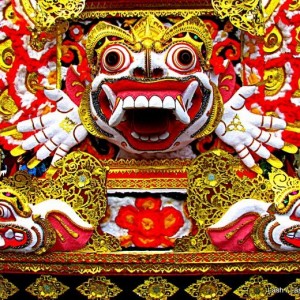
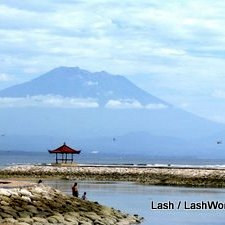 Interested in being guided around Bali by an expert of the island?
Interested in being guided around Bali by an expert of the island?
Come join me on my 2-week small group tour of Bali in June, 2014. Four to ten guests will accompany me on a fun culture and nature immersion tour of the Island of Gods: Bali Nature & Cultural Tour
If you found this post useful, you’ll love my FREE eBook:
100 Free Things to do in Asia. It describes 10 free activities in 10 different Asian cities and destinations.
Check out my eBook here.
——————————————————————————————————————————







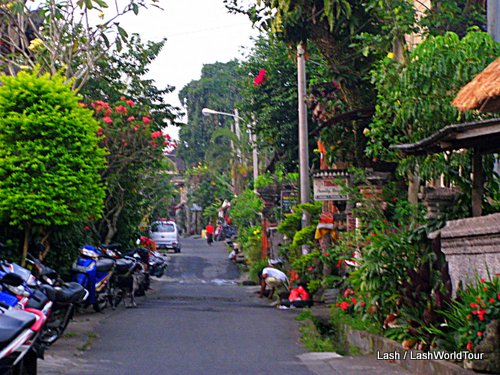
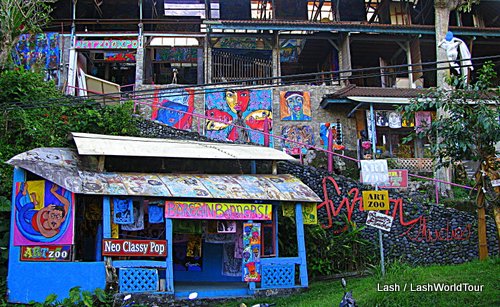


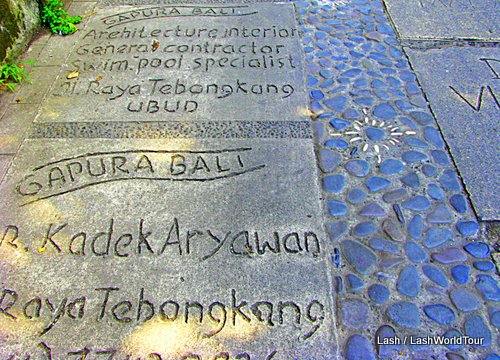
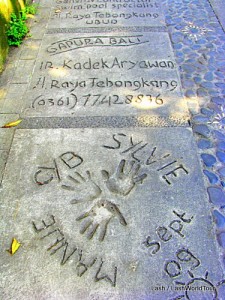
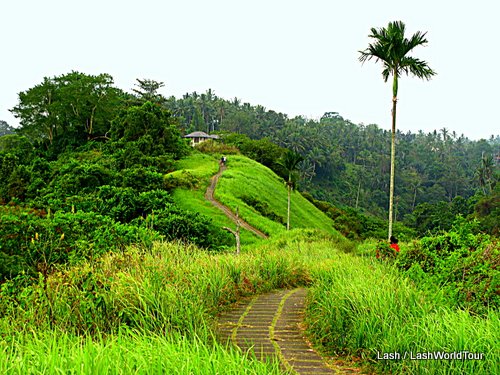
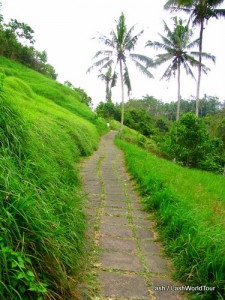
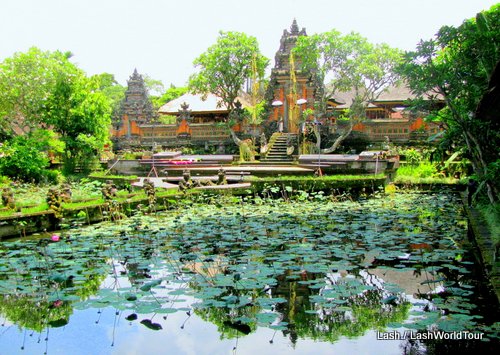
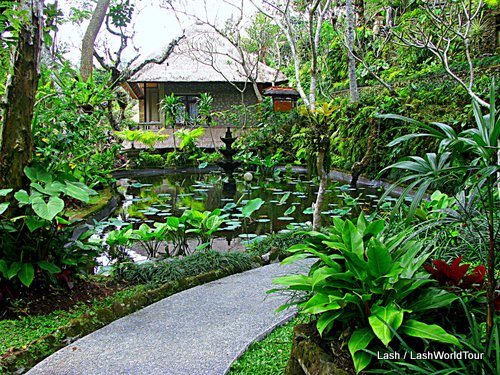
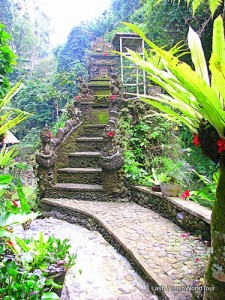
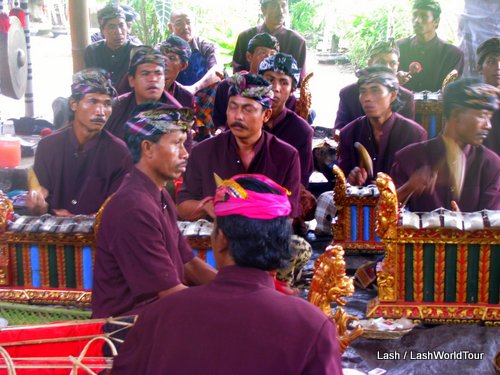
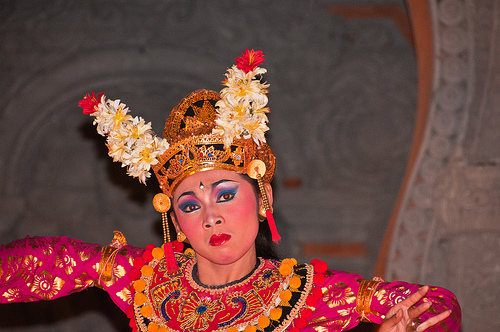
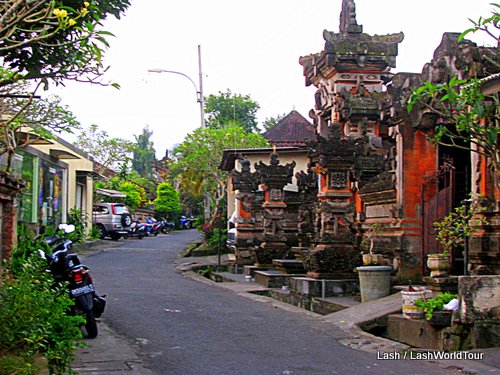
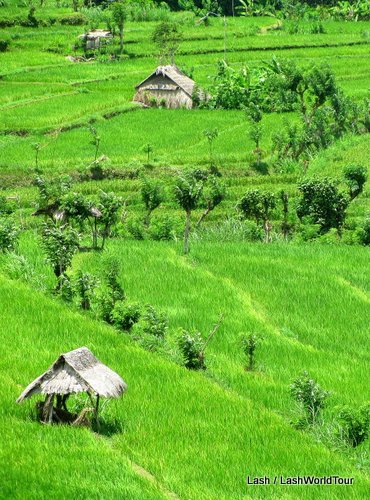
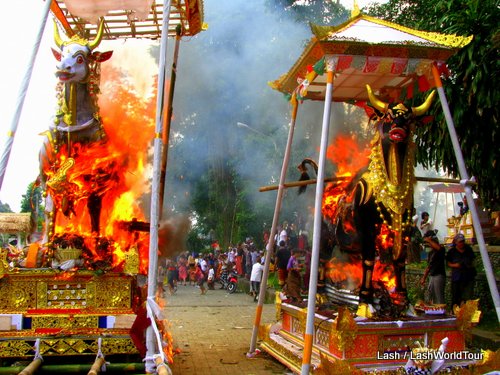
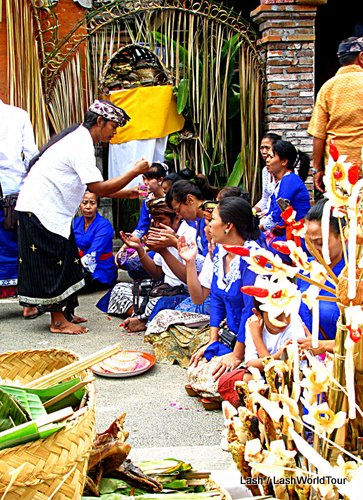
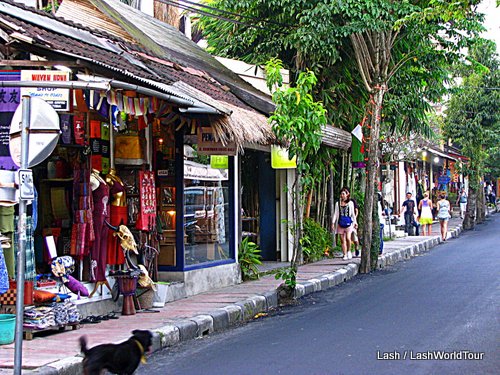
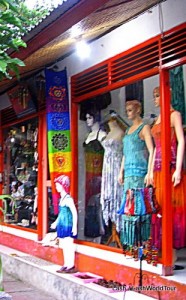

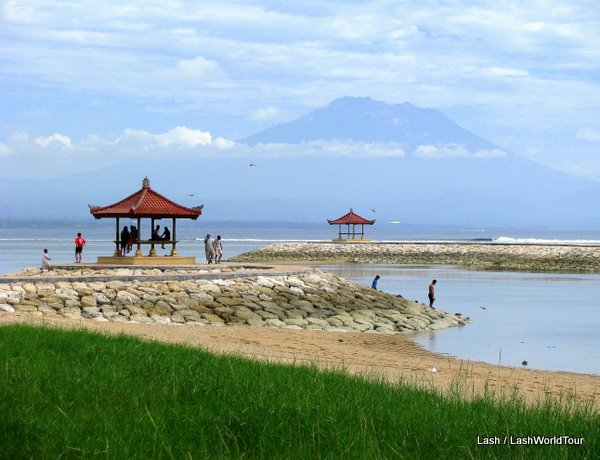


 Hi! I'm Lash, an American nomadic world traveler who's been traveling solo since 1998. I’m passionate about traveling the world nomadically and then sharing it all with you. I hope to inspire you to travel the world, to entertain you with tales from the road, and to help you reach your travel dreams. Welcome!
Hi! I'm Lash, an American nomadic world traveler who's been traveling solo since 1998. I’m passionate about traveling the world nomadically and then sharing it all with you. I hope to inspire you to travel the world, to entertain you with tales from the road, and to help you reach your travel dreams. Welcome! 




9 pings
Skip to comment form ↓
BALI TRAVEL TIPS: Costs of Budget Travel Around Bali in 2012 - LashWorldTour » LashWorldTour
2012/11/02 at 9:35 am (UTC 8) Link to this comment
[…] and intriguing Balinese daily life, the charming town is definitely worth a visit. Here are 10 Free Things to do in Ubud.Finally, here are 10 Tips and Cautions for Visiting […]
My 10 Favorite Places in Bali » LashWorldTour
2015/02/11 at 9:08 am (UTC 8) Link to this comment
[…] are my recommended 10 Free Things to do in Ubud – My Favorite Guest House in Ubud – Photos of Balinese Cremation Ceremony local man […]